Outdated IPs must be dealt with
The growth of cities will often throw up challenges in terms of efficiency, productivity, liveability, and environment, and a central part of this is what is commonly referred to as brownfield development, areas once-utilised now planned for alternative purposes.
 |
| Alex Crane, managing director for Knight Frank |
Decisions regarding brownfield development and urban regeneration will never appease all stakeholders. By definition, there is an impact on those who live in or near these areas, businesses, local government departments, and wider communities.
It poses a very challenging item of discussion around incentives to businesses on the target site, when the broader decision or urbanisation impacts much more widely.
Taking the decision relating to the conversion of Vietnam’s oldest industrial park (IP), Bien Hoa 1, into a new urban and commercial area as a typical example, we can see directly and clearly the difficulties workers, investors, and the government will face in making bold decisions.
This decision to move the IP acknowledges specifically that there will be compensation associated, so we will look not to focus on compensation but rather if any incentive may, on balance, be required in addition.
From the perspective of business, the largest challenge alongside capital and funding, more often than not, is that of timing. The proposed conversion of Bien Hoa 1 IP can be documented back to 2009 and business would be aware that the eventual implementation of the project, would not happen overnight.
Accordingly, businesses need to keep operational until there is such time a clear decision is made on any rezoning. It is unlikely any will go to the upheaval of relocating entire manufacturing facilities until there is certainty.
Cost impacts
The difficulty then becomes the timing around the final government decision and allowing business, investors and workers enough time to implement viable alternatives.
On the assumption that there are no ready-made alternatives for the factories in the immediate area, time allowances should be considered to ensure a smoother transition to other sites. Relocation of manufacturing facilities is a huge undertaking in itself and, subject to the complexity of the products, can take years to implement to ensure there is continuity of labour, materials, supply chains, ports, and customers.
There will be a cost impact for companies relocating factories in alternative areas and obviously new construction costs, but also it is likely there will be higher costs of logistics and export given the occupiers of Bien Hoa 1 are currently so well located for road and port infrastructure.
This is all on top of potentially having to re-hire workforces and mobilise severance payments for those workers who may not go to the new facilities. The latter is perhaps an area the government may assist with offsetting the costs.
While the direct impact of rezoning the IP has been foreshadowed, some encouragement for businesses to actively reinvest in their operations is an opportunity for the government to explore incentives or subsidies. Labour challenges could, for example, be met with assistance for the employers with tax breaks or subsidies, to either assist existing workers to relocate with their current employer or recruit new workers in new locations.
The obvious counterargument and area of sensitivity will come from neighbours or competitors of these businesses potentially having an advantage in attracting workers from a small, competitive labour pool. The pro/con argument here may also be seen with tax incentives or subsidies for higher logistics/export costs.
One of the key drivers of the decision to relocate Bien Hoa 1 IP is environmental impact. An opportunity may arise for assistance for these businesses to perhaps receive preferential green or similar loans for the construction of new, more efficient facilities or to improve the environmental impact of their supply chains or treatment of waste.
It would not be fair to assume all businesses will qualify for green-linked loans and so some support for those wishing to improve their environmental impact, while still not being the most environmentally friendly production facilities, would need additional support, but help could be applied to various elements of design, procurement, and construction financing.
Even before new construction of facilities for the impacted companies, the task of sourcing alternative land, designing new facilities and then procuring presumably new plant and machinery is a costly process.
These mobilisation costs may also be something that can be offset, or in the case of planning and development of new facilities, could be fast-tracked. For companies that may need to import new and improved plant and machinery again, a streamlined process could be offered to ensure faster commencement of production in new facilities or procurement of better plant and machinery or construction materials.
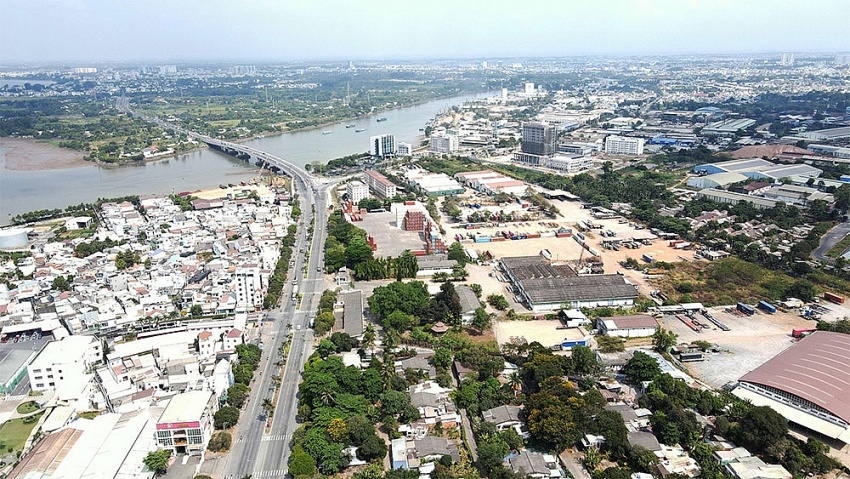 |
| Industrial park plans make an impact on those who live in or near them, Photo: Le Toan |
Area regeneration
As for the other side of the relocation consideration of the factories, there could be a forward-looking incentive.
In the event factories relocate to another, older IP for example, the IP could receive some incentive to allocate their land to the new factories by way of preferential loan or subsidiaries allowing for any park infrastructure upgrades that benefit the environment, such as waste treatment.
This might be a small way of ensuring the environmental problem is not simply being moved from one IP to another but could be a little step in some improvement or progressive change in the wider area, park, or manufacturing sector.
The challenge for authorities in Vietnam relocating IPs is not unique. Businesses require relocation support and will view it in the same way that foreign companies look to Vietnam as a bright destination for their manufacturing and supply chains.
For manufacturers, the imperatives are logistic infrastructure, access to labour, export and power. Companies looking to relocate from Bien Hoa 1 are no different, and the challenge for all stakeholders is that all of these requirements take years of planning and investment.
As for the regeneration of the area itself, it is certain there are opportunities for some of these potential incentives to be reclaimed from additional taxes in the area or funds raised by auctioning land. It will naturally take some time to recoup, but in the meantime, it is important to progress at a pace that encourages future investment in regeneration but also assists those businesses that are displaced.
There is likely never a perfect balance for all stakeholders, but businesses will hope for the continuity of operations and cost impact while the government will hope for the continuity of the use of the land itself to fulfil the plan of creating a new urban area, bringing jobs, affordable housing, and lessening the environmental impact on the river and surrounding areas.
It is an unenviable task, but one that must be undertaken to allow cities to grow and hopefully at the same time improve the urban landscape and hopefully some of the environmental impact too.
Going ahead, the clearance of the site, any remedial works to contaminated areas, and infrastructure works will be significant, and there is a lot of risk left on the table for future developers to join and undertake.
One hopes that what replaces this once pioneering IP, one clearly at the forefront of Vietnam’s industrial power, can do the old park itself justice and reflect the country and its industrious spirit; to look forward, to embrace community, and to create opportunity.
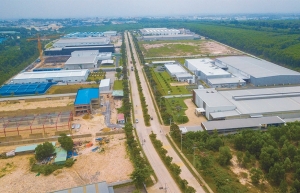 | Industrial parks within Vietnam keen on Taiwanese investment Industrial parks in Vietnam are moving to pick up a surge of Taiwanese investment. |
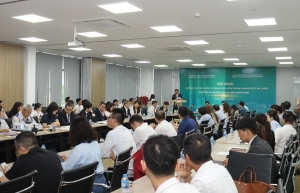 | Amata City Ha Long marks six years of development Amata City Ha Long (also known as Song Khoai Industrial Park), in collaboration with Quang Ninh Economic Zones Authority, organised the first meeting of investors on April 19. |
 | Viglacera’s industrial parks continue to attract green projects Viglacera, one of Vietnam's leading industrial park (IP) developers, is spearheading the development of smart IPs to attract green industrial projects. |
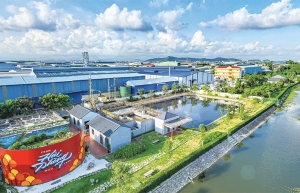 | Financial barriers still remain for true industrial symbiosis Despite having great potential for implementing industrial innovation, Vietnam lacks financial incentives for businesses in executing industrial symbiosis model and preventing them from taping into a circular community. |
 | Vietnam is ready to make a statement with eco-IPs Vietnam is heading towards sustainability in its economic performance. Bruno Jaspaert, CEO of DEEP C Industrial Zones, talked to VIR’s Linh Le about the transformative journey towards sustainability in Vietnam’s business ecosystem, and DEEP C’s pivotal role in this evolution. |
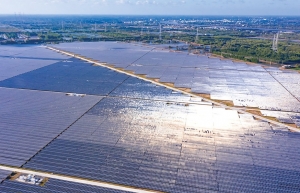 | Rooftop solar power puts IPs on the map Transferring to renewable energy through installing rooftop solar power systems is set to help foster competitive capacity and further the sustainable development of businesses. |
What the stars mean:
★ Poor ★ ★ Promising ★★★ Good ★★★★ Very good ★★★★★ Exceptional
Related Contents
Latest News
More News
- Unlocking urban potential of smart cities (December 18, 2025 | 16:50)
- Green finance offers 'passport' for Vietnamese construction, building materials firms (December 15, 2025 | 08:00)
- Gamuda Land commit long-term investment (December 12, 2025 | 11:49)
- HITC ties up with Evolution to develop AI and hyperscale data centres in Vietnam (December 11, 2025 | 12:09)
- Real estate deals boom via high-profile names (December 08, 2025 | 11:32)
- Industrial segment shaped by M&As (December 08, 2025 | 08:00)
- The Privé sets the benchmark for luxury real estate (December 05, 2025 | 08:28)
- TD CASA and the rise of bespoke interior design in luxury living spaces (December 03, 2025 | 14:14)
- Lee Soo-man's Blooming Sky to build Gia Lai culture, sport, and entertainment complex (December 02, 2025 | 16:41)
- Sustainability in DNA of Keppel Vietnam's future urban development strategy (November 28, 2025 | 10:53)

 Tag:
Tag:




















 Mobile Version
Mobile Version